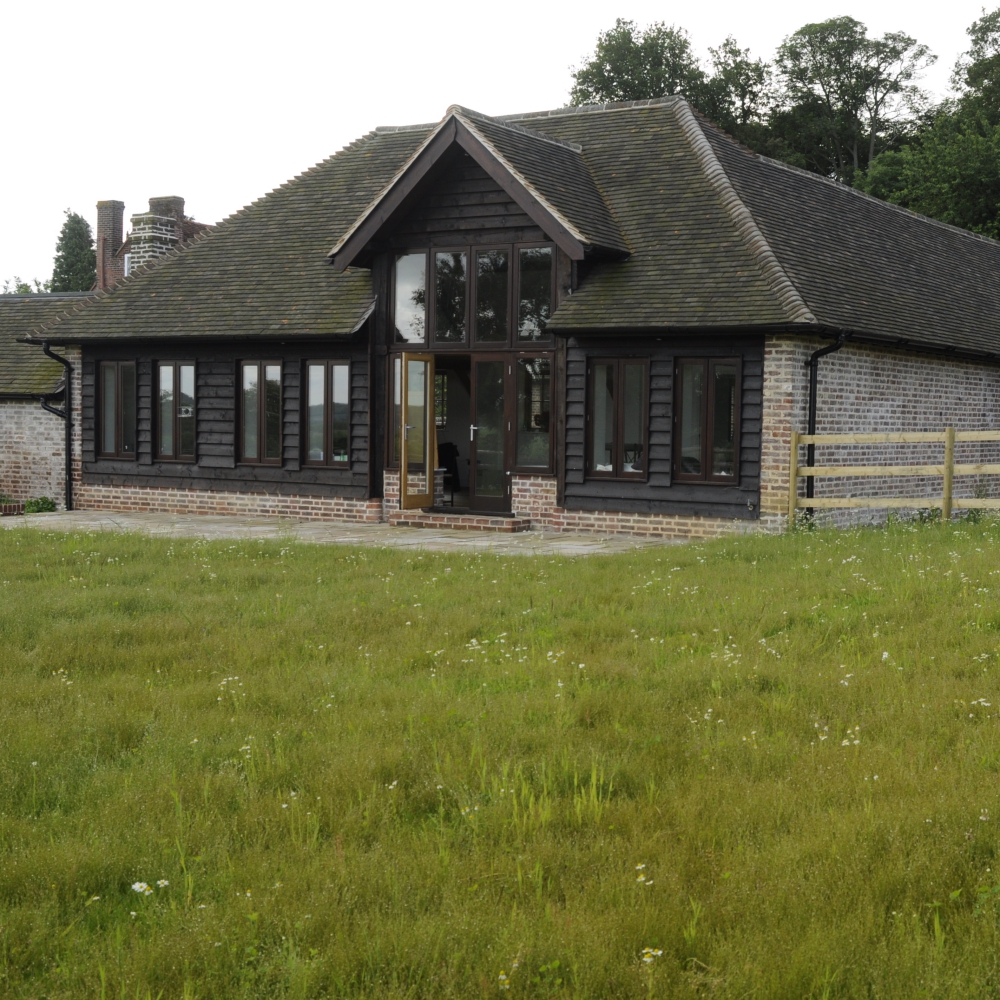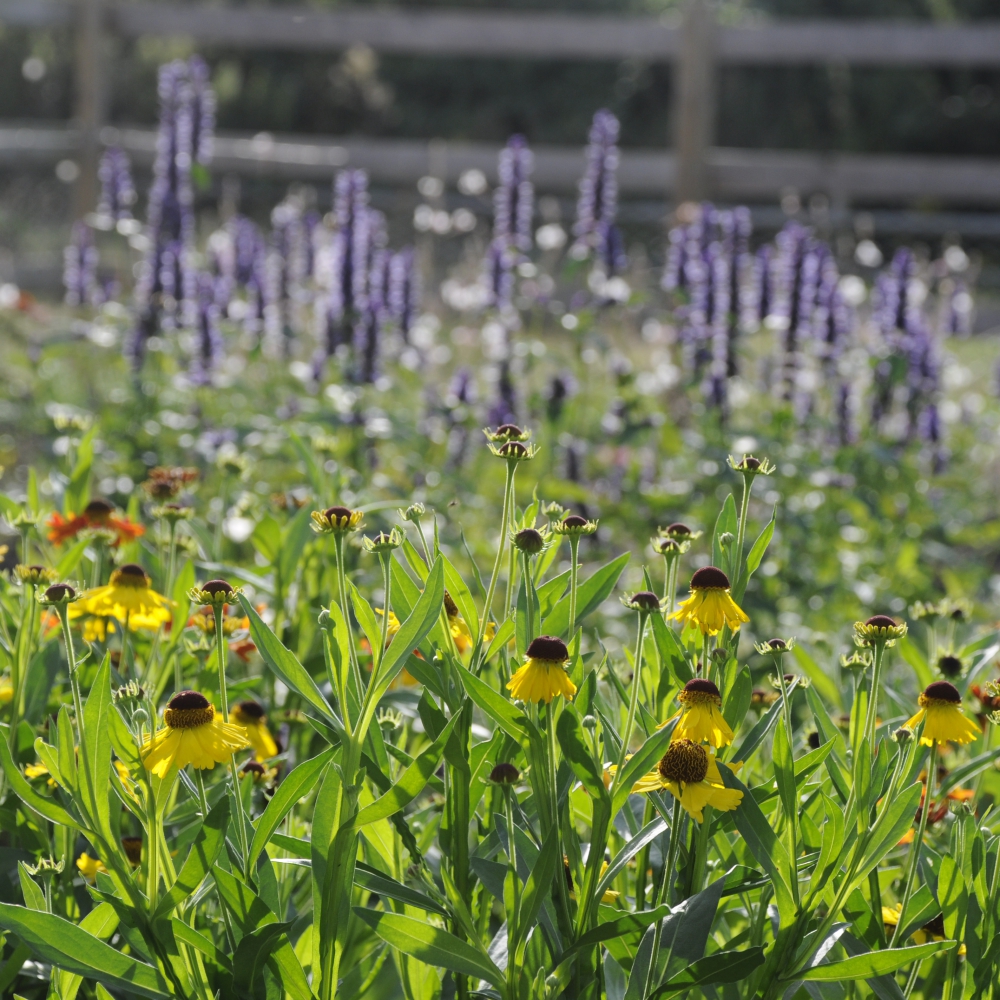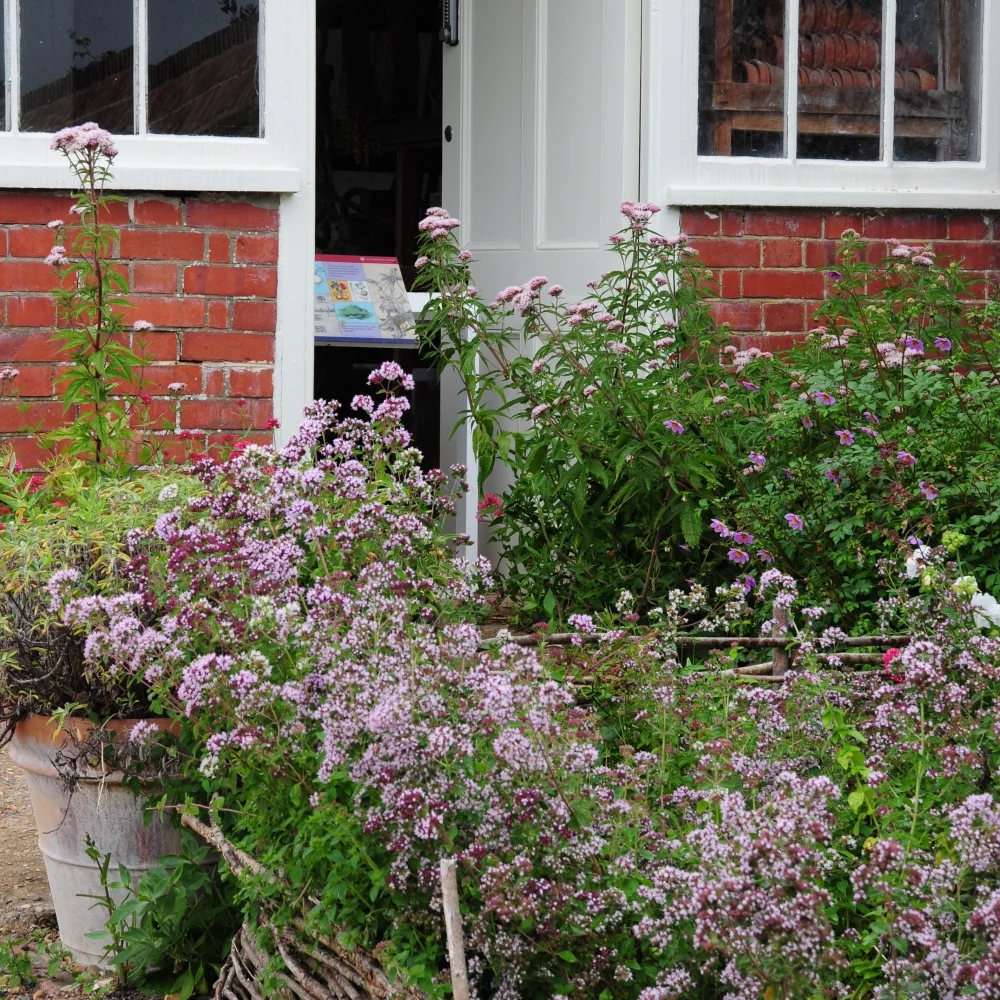2023, a year in photos
I googled “what will 2023 be famous for?” There were some forecasts - war, climate catastrophe, financial turbulence and technological change - so far, so predictable. But a fashion trend for blackened teeth thankfully hasn’t come to pass (or did I miss it?).
Wimbledon Common in January
The year started with a famously cold January. It was a near record of eight days in a row of freezing temperatures. Whilst Wimbledon Common looked fab in the heavy frost the weather took its toll in the garden. Many people lost plants, in particular Hebes, Erigeron karvinskianus and Penstemons. They were hard to replace initially as the frost had affected so many gardens as well as suppliers in the UK and Europe.
Cyclamen at Wakehurst Place in February
One answer to this is to plant a winter garden, full of plants that look their best at this time of year. I went to visit Wakehurst Place which has a fairly new winter garden. It didn’t disappoint and partly as a response to this we have developed a couple of winter borders in my local park.
Magnificent magnolia in Bushy Park in March
A persistent easterly wind in March and April meant that spring felt like a long time coming but finally, after a few false starts, I got on a plane for the first time in three years to go to the garden island of Madeira.
Fanal Forest, Madeira, in April
There were gardens aplenty on the island but one of the most fascinating sights was the ancient laurel forest on the north slope. Subject to frequent fog and mist the trees were already mature when the Spanish arrived in the 14th century. It is an eerie place and, as I found, it’s very easy to get lost.
Bluebells in the Surrey Hills in May
May was a busy month. The weather warmed up a little and I found a great new bluebell wood in the Surrey Hills. The sun also came out for the Chelsea Flower Show and there was only one garden everyone was talking about - Sarah Price’s iris garden. It wasn’t overrated, almost worth the ticket price on its own.
Chelsea Flower Show in May
Also in May I finished planting a new garden in Wimbledon. Throughout the year I have continued as a volunteer gardener in my local park. Luckily the summer wasn’t quite as scorching as 2022. The ox-eye daisies in a wildflower part of the park were stunning in June.
Ox-eye daisies in June
All through 2023 I have been learning how to use a 3D design software package. It has been challenging to say the least but considerable progress has been made. I’m not sure I’ll ever reach guru status, but it’s good to get to a stage where clients can see their prospective gardens in 3D and even walk through them. I haven’t had a client yet say they prefer the old hand-drawn way of doing things.
Cedar greenhouse in July
In July I caught up with a friend who I’d helped with the layout of her garden ahead of the installation of a new greenhouse.
Waterperry Gardens in August
In August there was an overload of garden visits to Ham House, Waterperry Gardens and the best garden I’ve seen in a long time, Le Jardin Plume.
Le Jardin Plume, Normandy in August
Whilst in France I also visited the garden festival at Chaumont and the formal gardens at Chenonceau.
Chenonceau in September
Autumn took a long time to arrive, an unexpected heatwave followed by what seemed like endless rain, and then finally, some spectacular colour. Piet Oudolf describes a fifth season, somewhere between summer and autumn. The garden at the Hepworth Wakefield is a great example of how good a garden can look at this inbetween time.
Allium sphareocephalon and Perovskia in October
And my photographic year ends there, somewhat abruptly. The big camera is out of action and the camera on my phone doesn’t really cut it as a replacement. Normal service will be resumed shortly, hopefully in time for some winter photography.
2018 - A good year?
Is 2018 - a good year to remember, or not? Maybe not for some reasons, but, politics aside, ignoring natural and man-made disasters, bad tempers and bad news in general, here is the good news round up of 2018 in the small corner of the world occupied by Arthur Road Landscapes.
A new year, a new day and a new camera on the beautiful island of Barbados. Not too much in the way or horticulture here but when the landscape looks like this who needs a garden?
But of course I couldn’t resist another visit to Hunte’s Gardens.
Having cleverly avoided the Beast from the East, but running full pelt into the Mini-beast, I made a beeline for the Palm House at Kew for a bit of warmth and humidity.
The cold winter and the sudden arrival of a very warm, but late, spring (who knew what was to come?) meant a very good year for bluebells. This little woodland of oak and ash was discovered by my parents in deepest Berkshire.
May means Chelsea. This was my favourite garden, by Sarah Price. Not everyone’s cup of tea, but definitely mine, I’m just waiting for a commission for somewhere in the Med…
At the end of May I visited Lukesland on the edge of Dartmoor. Spring was a little later here so this Wisteria was still in its full glory.
June sees the climax of our native wild flowers. Driving around Surrey I love the road side verges covered primarily in ox-eye daisies. Parts of the M25 are quite spectacular, something to enjoy whilst sitting out a traffic jam. It’s quite tricky finding somewhere to park and photograph them (I haven’t stopped to take any photos on the M25 I hasten to add).
The heat wave started around the middle of June I seem to remember. I went to Loseley Park before the weather began to take its toll and the White Garden here was looking splendid. Of course the thing about white gardens is that they’re not completely white.
July and August seem to have been swallowed up in a blaze of sweltering heat and guilt about using a hosepipe (sorry/not sorry) but at the end of summer I went to The Homewood in Surrey. I hadn’t expected much of the garden but even I was charmed by the heather, Scots pines and rhododendrons.
A very busy autumn meant little time for visiting gardens but I did manage to get the odd half hour or so on Wimbledon Common. Being outside in bright sunshine whenever possible is my way of dealing with short days and long dark nights.
This is beginning to sound like I haven’t done much work in 2018. Well it’s been a funny old year, a mixture of feast and famine. This sweet little courtyard in Twickenham was completed early in the year. The owners are bird mad so hopefully this spring will see a few new residents in the bird boxes.
A large back garden project which has taken a couple of years, was finally planted in October. There’s not too much to see plant-wise at the moment but I’m looking forward to seeing it develop next year.
Maybe not a vintage year but not a bad one either.
Like these photos? Follow me on Instagram.
The evolution of a garden
I first met M&S in May 2012. They had been living in the converted dairy for about 18 months before starting to focus on the garden. They wanted a modern country garden but without roses, delphiniums or pinks, and their most immediate priority was to create a visual barrier between the garden and the passing dogwalkers.
I first met M&S in May 2012. They had been living in the converted dairy for about 18 months before starting to focus on the garden. They wanted a modern country garden but without roses, delphiniums or pinks, and their most immediate priority was to create a visual barrier between the garden and the passing dogwalkers.
The design took about nine months to finalise and then it was a further three months or so before the contractor started work.
What originally looked like a field turned out to be a thin layer of so-so turf, by now more than knee high, over the broken up hard standing of the milking parlour. And under the rubble lay several huge blocks of concrete and a couple of underground chambers. Several diggers and grab lorries later, plus tonnes of new topsoil and by June 2013 the garden was almost ready for planting.
Most of the planting was done in July 2013, but not before a massive weeding job was done on the new borders (the result of not mowing for the best part of two years, and being next to a field). The plants looked pathetically small when they went in. The fact that it was a mini heatwave meant the hose was on a lot on the first few weeks.
By August though some of the perennials were really going for it. The hedge of Calamagrostis, planted to help keep the neighbouring dog walkers at bay, was being stubbornly slow to put on any height.
During the winter the new tree, a Sorbus aria Lutescens had gone in, plus a new hedge of beech whips. The grass hedge was still low though and the dog walkers enjoyed the view of the garden for a bit longer.
By April the hundreds of bulbs planted in the autumn were starting to appear, giving a shot of bright colour. The red ones were supposed to be tall but turned out to be comically short compared to the Queen of the Night and Ballerina tulips. The perennials have bulked up a bit through the autumn and are starting to put on a growth spurt.
The first perennials in flower are the Euphorbias and Salvias, punctuated by lots of Alliums. The neighbour's builder wasn't impressed that everything seemed to be blue.
By June 2014 the Salvias are still going strong and the Penstemons, Cenolophium and Sanguisorba are broadening the colour palette.
This garden really takes off in July. Although it faces north there are no tall buildings nearby and most of the trees are on the northern boundary so the whole garden is in sun almost all day. The tall perennials and grasses grow straight up and only a few need staking after heavy rain. The colours are very rich, just what M&S wanted. The bees love the mix of Echinaceas, Verbena and Agastache. And finally the Calamagrostis hedge is tall enough and dense enough to block the view of the dog walkers.
It's still looking really good in August 2014 with the late summer flowers from Echinacea, Gaura and Sedum with the grass Anemanthele filling out.
From August into autumn there's a gradual fading of colour in the garden. But even on a wet November day the structure of the plants is still good, making the garden interesting even in rubbish weather.
The structure of most of the plants holds out until January 2015 and this is how the garden looked before the big cut down. In early spring we mulched the garden, partly to improve the still fairly heavy clay and also to help keep some of the weeds at bay. The former was more successful than the latter.
The display in July 2015 was even more spectacular than the previous year.
By July 2016 most of the perennials have reached maturity. We are starting to notice one or two problems though. The lovely blue Agastache has given up the ghost after a winter of very heavy rain. And two patches in the garden are causing some problems, one because it seems to get inexplicably wet and the other has no apparent cause. In the latter some of the Cenolophium and Calamagrostis have died. Yet both are doing well just a few yards away. We've replanted both areas since, with mixed results. It's still a work in progress but Japanese Anemones seem to tbe managing quite well.
And here we are in July 2017. We have already divided some of the Rudbeckias and Calamagrostis to plant elsewhere in the garden. Some years the Euphorbias are splendid, some years they just die. The Anemanthele, a short-lived grass, has pretty much had it. Some have been replaced but this autumn the gaps could be filled by the successful Veronicastrum virginicum. The Salvias have had a bit of a time with slugs and snails and the weeds are unrelenting. But finally the beech hedge has formed an almost solid screen between the garden and the field.
In the years between making a start on the garden and now the clients have built a new garage, converted the old garage into another room, built a kitchen garden, filled in a ditch, had a baby and adopted two hedgehogs. I'm still hopeful the pond that was part of the original design but postponed indefinitely might be on the cards again.
Gardens,are always changing, making them unbelievably infuriating at times but also marvellously challenging and rewarding.
Polesden Lacey
There's been a house at Polesden Lacey, on the edge of the Surrey Hills, since 1336. The gardens, however, owe most of their present form to Edwardian society hostess Margaret Greville.
As usual, short of time, I didn't go into the house. The exterior is attractive and provides a lovely backdrop to the extensive gardens.
The gardens are amongst the most popular of the National Trust's properties and considerable effort has gone into keeping them in good condition. Many of the plants were labelled - handy at times.
The star of the garden, in late July at least, are the long borders.
I didn't pace them out but I reckon it would take Usain Bolt a good 12 seconds to run them at full speed.
Highlights of the late summer borders are the statueque Kniphofia Tawney King, Verbascum bombiferum and various Phloxes, Achilleas and Salvias.
Next to the Long Borders is the Rose Garden. Not quite my cup of tea, and at this time of year the roses are fading, but it is on an epic scale. I did like the pergola tunnels of running the full length of the walled garden.
Round the corner is the Cutting Garden. Although there was an extensive cutting garden in Margeret Greville's time, it was a bit futher away from the house than it is now.
The richness of the Dahlias and other flowers such as Verbena bonariensis tell you we are moving into late summer. Like all good working gardens, there is a gardener's bothy.
This one seemed to be more for show than work though.
I stumbled across the meadow almost by accident. Paths have been mowed through the wild flowers and ornamental trees are planted seemingly randomly throughout.
One of these was Acer griseum, also known as the Paperbark Maple - for obvious reasons.
The hunt for a loo took me past a second hand bookshop (no time for that) into the woods and finally back for one last look at the Long Border.
I would have stayed for tea and cake but I had a meeting with a new puppy which was slightly more appealing. However, I have had coffee and cake there before, quite good from memory, even though the queue was overly long.
Although the carpark was full and it was the school holidays, the grounds are so large it never felt crowded and at times I was lone in parts of the gardens. Fab. I think of the National Trust gardens I've seen this is second only to Hidcote.
Polesden Lacey - https://www.nationaltrust.org.uk/polesden-lacey






















































